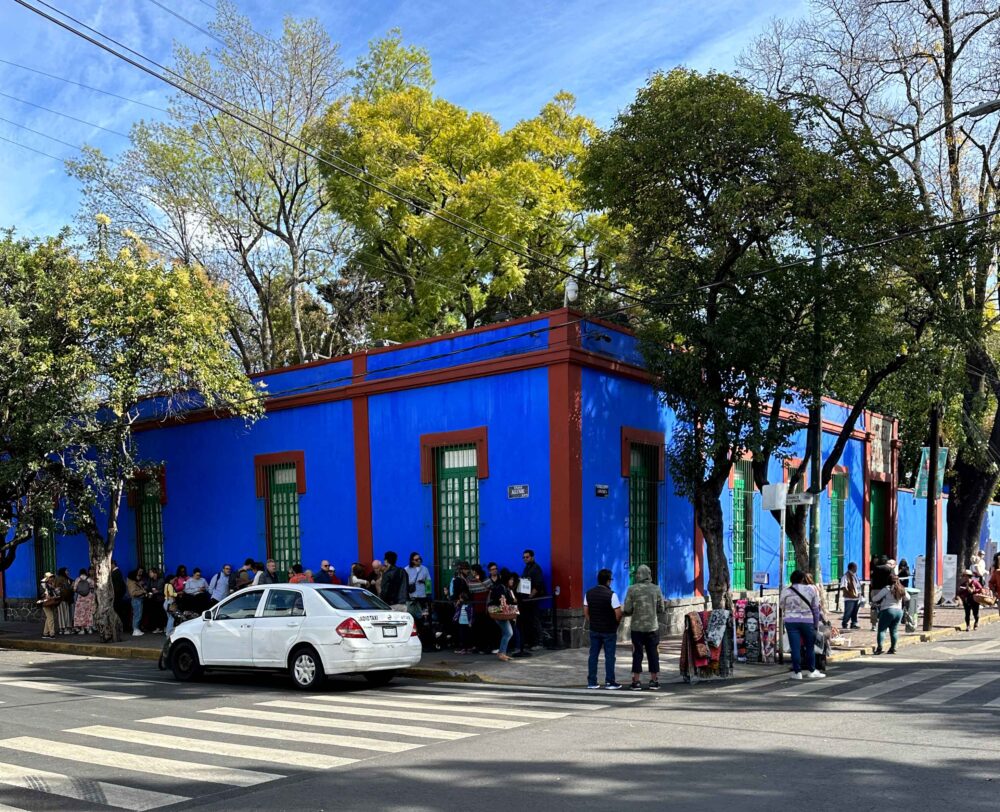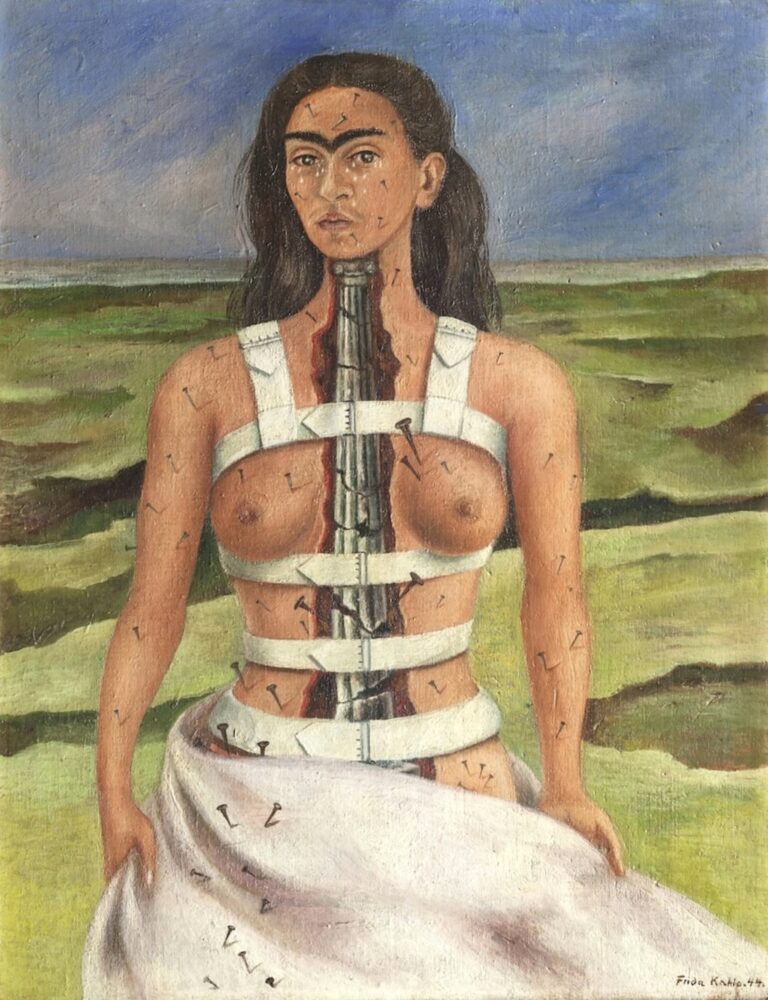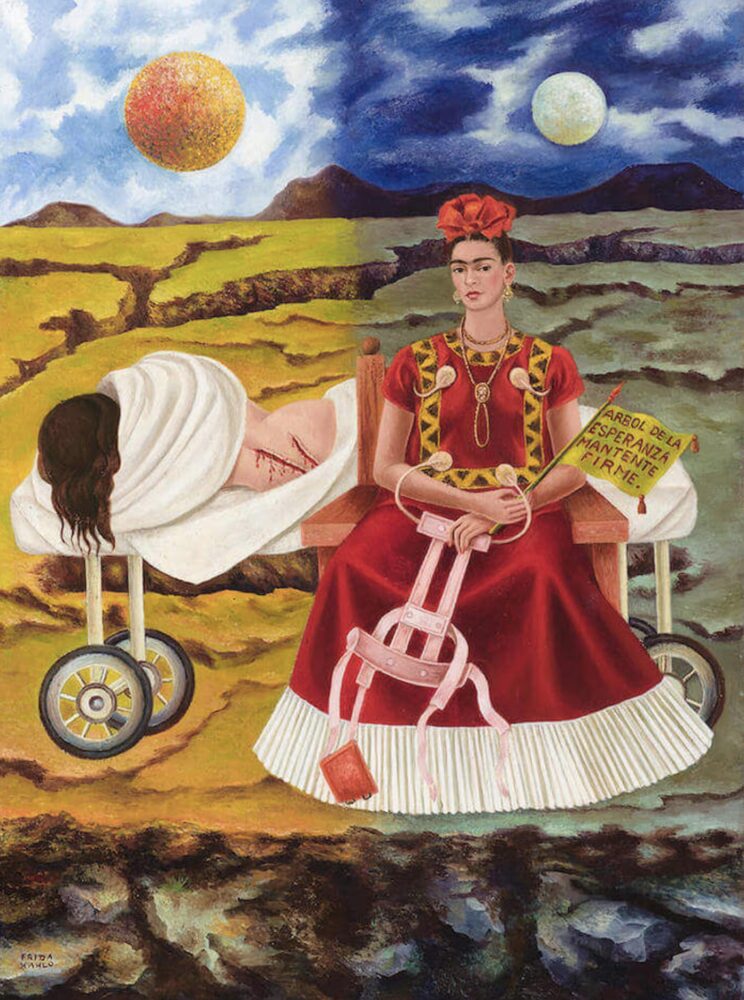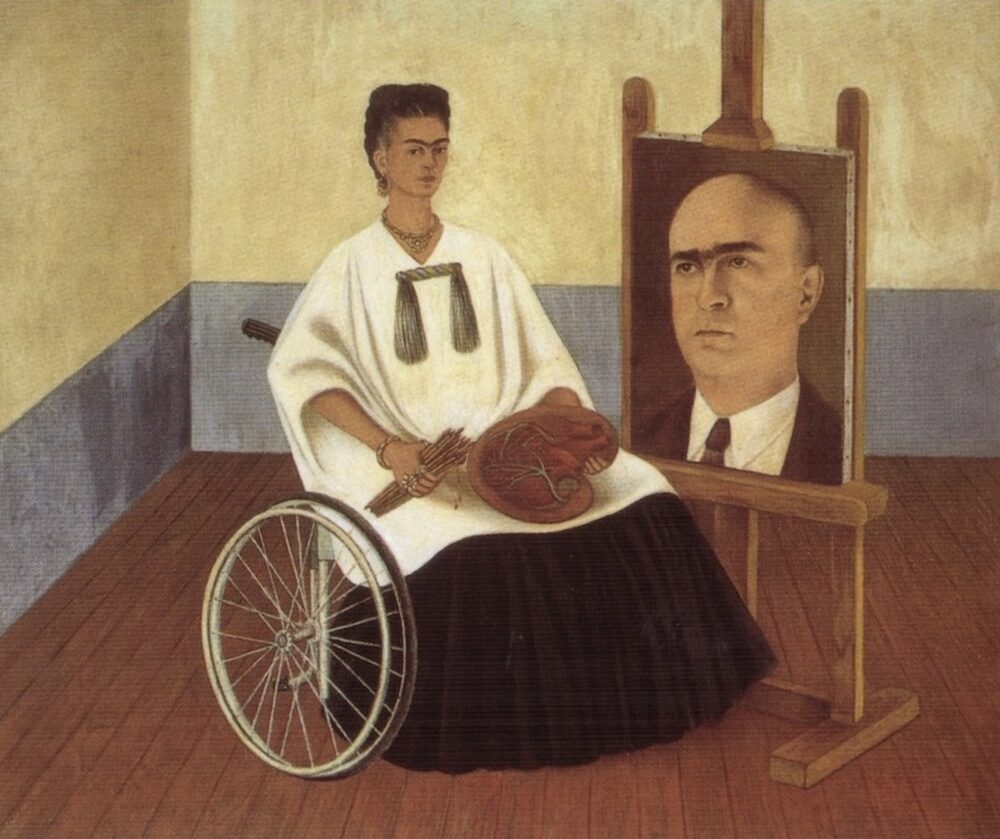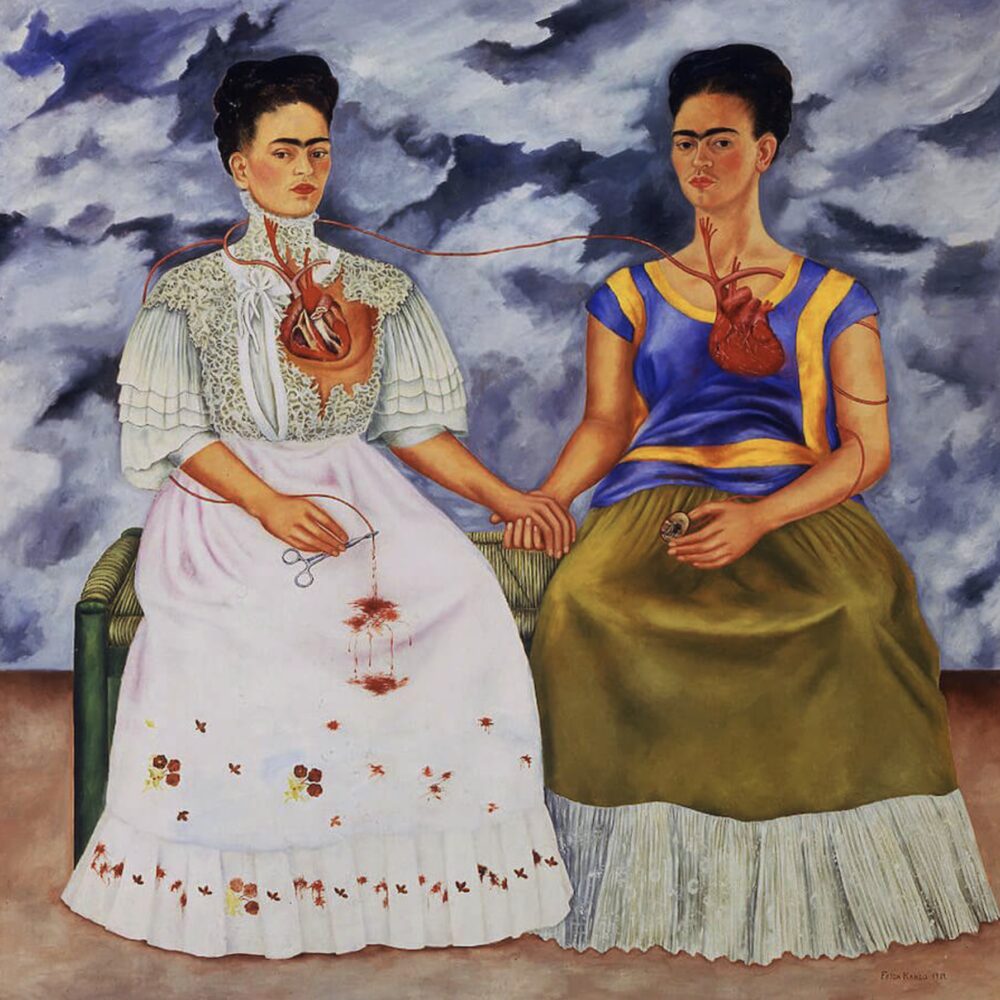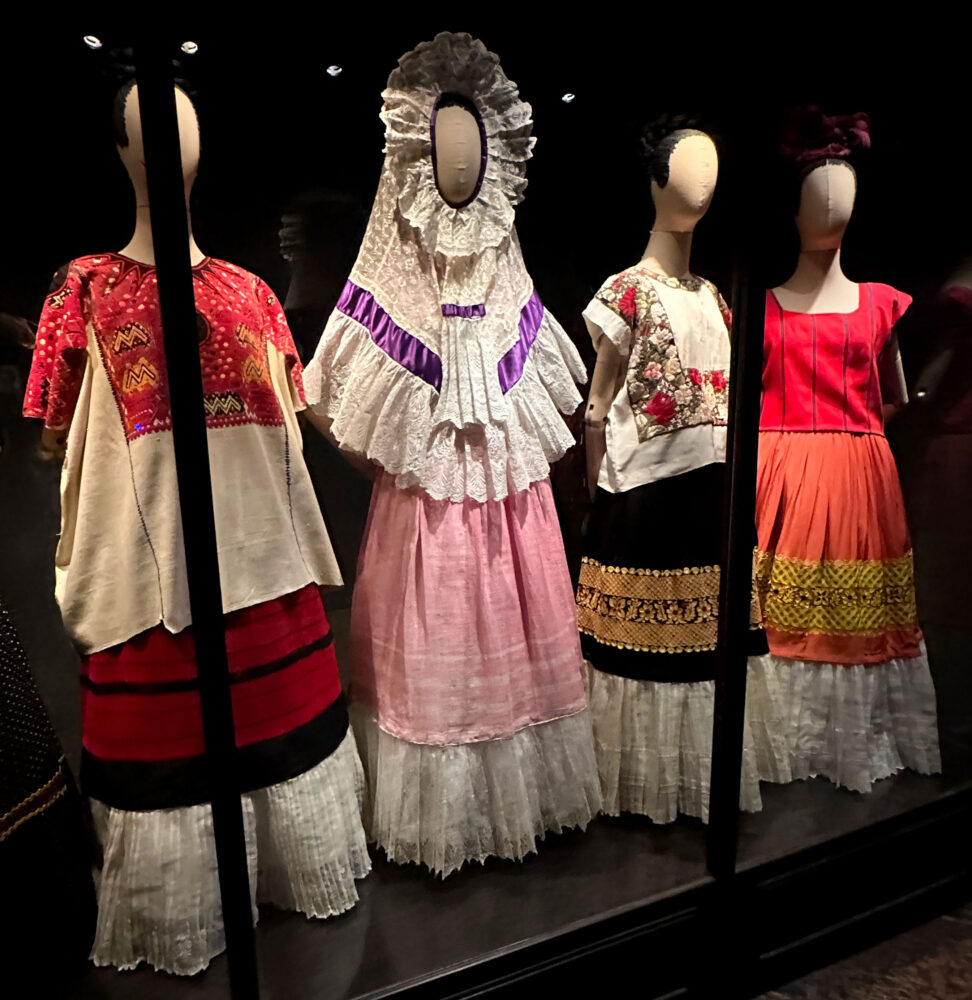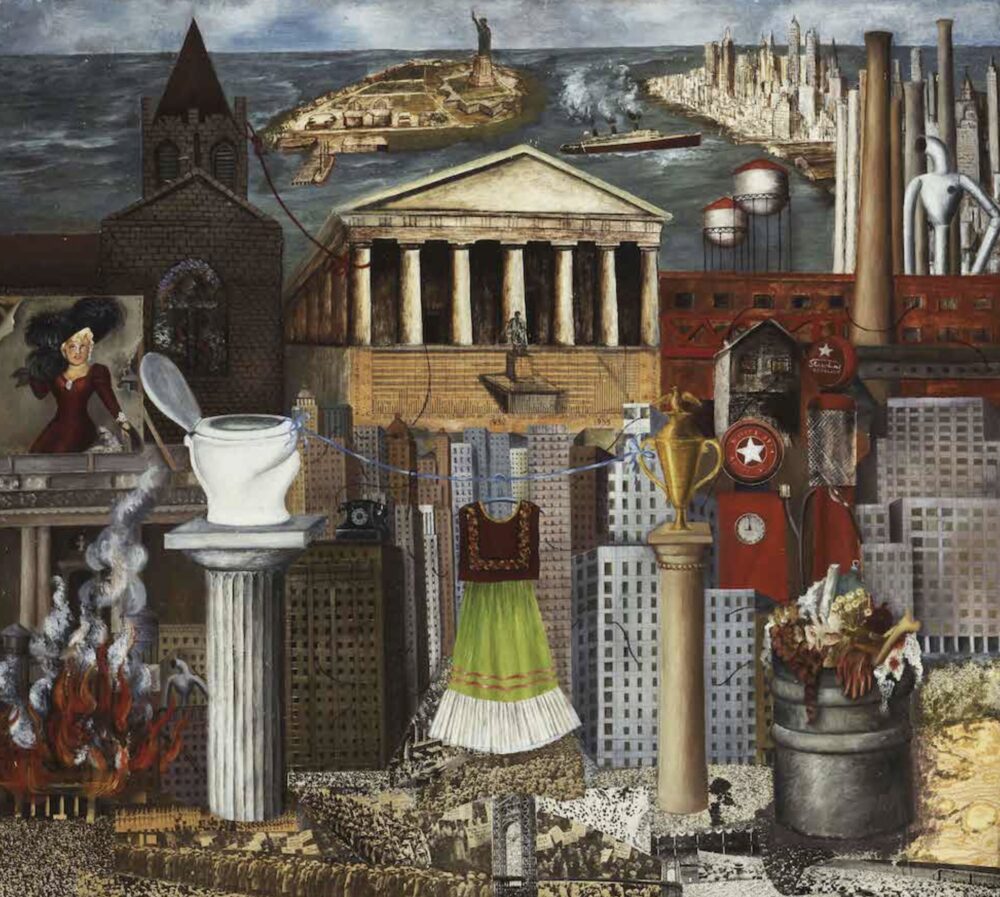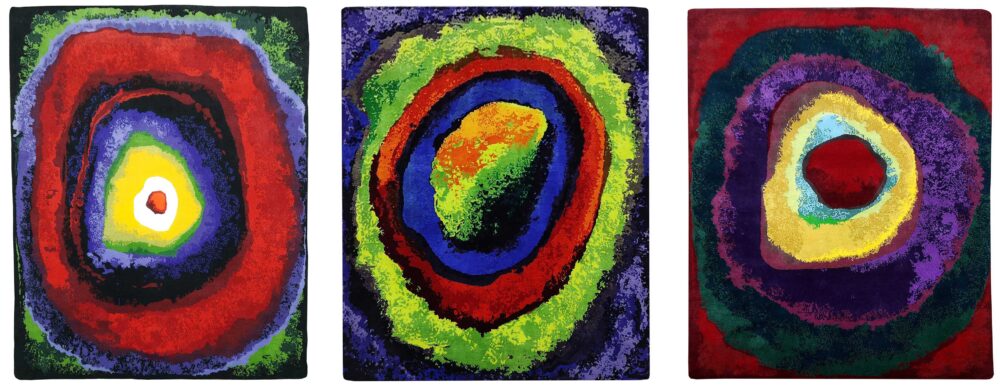Frida Kahlo: Her Iconic Life and Artwork in Mexico
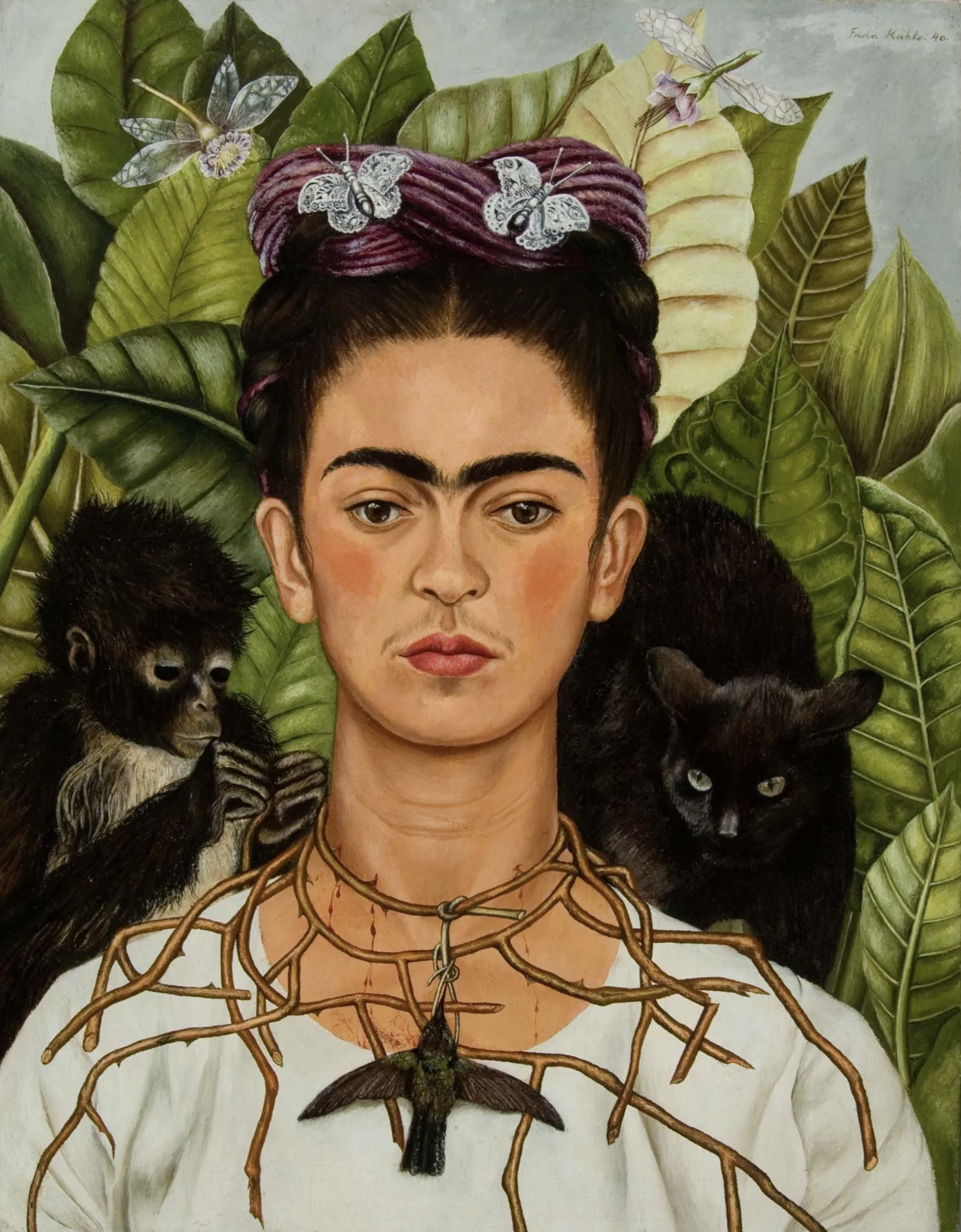
After visiting Mexico in January 2025, Sonya was deeply inspired by the country’s architecture, vibrant culture, rich cuisine, and historic art and design. Among the many iconic figures she explored, artist Frida Kahlo stood out as a profound influence. In this blog, we’ll delve into Frida Kahlo’s iconic life and artwork to examine why she remains such a timeless icon in the worlds of art and design, with a legacy that continues to inspire generations.
Frida Kahlo and how her health deeply influenced her art
Frida Kahlo’s life and art were intertwined with her physical and emotional struggles, often creating work which was autobiographical. Her works vividly reflect the challenges she faced, particularly her health issues and personal pain.
In 1913 at 6 years old, Frida contracted Polio which left her right leg weaker than her left. In 1925 at 18 years old, Frida was in a severe bus accident which caused fractures to her pelvis, spine, and leg. These injuries exacerbated the weakness in her right leg, requiring additional medical support.
As a result of these injures, Frida used painting to express her physical and emotional suffering, and she would often use imagery of metal and other elements to illustrate the medical interventions she endured.
Frida Kahlo’s paintings reveal how deeply her physical injuries shaped her sense of self and artistic vision. By portraying her wounds and the metal devices that held her body together, she not only shared her suffering but also celebrated her remarkable resilience, transforming her pain into profound and universal works of art.
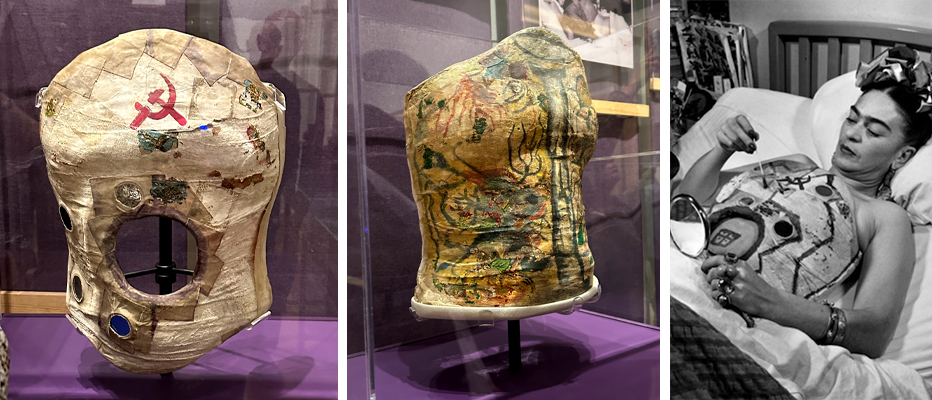
Left: Sonya’s images of Frida’s body casts captured at Frida’s House. Right: Frida painting while in bed
During Sonya’s time at Frida’s house, Sonya was able to see her hand-painted plaster casts. Frida wore these casts for much of her life due to her fragile spine, a consequence of the near-fatal bus accident. Immobilized for hours at a time, Frida transformed the casts into canvases, drawing tigers, monkeys, and even an image of the car that collided with her at just 18 years old.
Some iconic paintings which highlight Frida Kahlo’s medical issues and struggles:
Frida Kahlo’s Self Portraits
Frida painted 55 self-portraits in her life, making herself a central theme in her artistic work. These works were not sole depictions of her appearance but instead an exploration of her identity and struggles. While bedridden after her bus accident, Frida used a mirror mounted above her bed to paint herself. Confined to small spaces and immersed in long periods of introspection, her self-portraits became a powerful medium through which she could visually articulate her pain and inner struggles.
“I paint myself because I am often alone and because I am the subject I know best” – Frida Kahlo
One of her most iconic self-portraits was “The two Fridas” (1939) which was completed shortly after her divorce with Diego Rivera. The painting depicts two versions of Frida sitting side by side and holding hands. Both Fridas have exposed hearts, symbolizing vulnerability and emotional pain. This painting was created to express and reflect her desperation and loneliness from the separation between her and Diego.
Frida Kahlo’s connection to Mexican culture
Frida Kahlo’s art and personal identity are deeply intertwined with Mexican culture, making her one of the most iconic symbols of Mexican heritage.
Traditional Mexican Clothing
Frida wore traditional Tehuana clothing which reflected her love and passion for her birthplace of Mexico. Tehuana clothing refers to the traditional attire of the Tehuana women, an Indigenous group from Oaxaca, Mexico. The style of clothing is known for its iconic vibrant colours and intricate embroidery, which you can often see in Frida Kahlo’s self-portraits.
Frida’s years during the Mexican Revolution
During the Mexican Revolution between 1910–1920, Frida Kahlo’s life was impacted greatly, shaping her national identity and artistic expression. The revolution fostered a renewed emphasis on Mexicanidad (Mexicanness), celebrating Indigenous culture, folk traditions, and the rejection of European colonial influences.
Paintings which highlight her passion for social justice and Indigenous heritage:
-
“My Dress Hangs There” (1933)
This piece was made after herself and Diego had been living in America for 3 years. Frida longed to go back to her homeland of Mexico, and therefore reflects the superficies of American capitalism.
-
“The Love Embrace of the Universe, the Earth (Mexico), Me, Diego, and Señor Xólotl” (1949)
This work pictures Mexico as a nurturing, fertile entity, supporting Frida and Diego in its arms. They are surrounded by Mexican vegetation, including cacti and arid plants. Alongside them is her cherished pet, Señor Xólotl, a hairless dog of the ancient Mexican Xoloitzcuintli breed.
Sonya was deeply inspired by her visit to Mexico in early 2025, particularly by Frida Kahlo’s Blue House and the Frida and Diego House-Studio Museum. The vibrant colors and artistic energy she encountered have infused our studio with fresh creativity. We’re now working on new rug designs inspired by Frida Kahlo and her beloved Mexico.
Sign up for our newsletter to be the first to know when these exciting new designs launch later in 2025. In the meantime, explore our collection of over 50 unique, colorful rug designs crafted by Sonya and her collaborators, perfect for transforming your home.
Contemporary rugs inspired by iconic artists:
The After Matisse Rug
The After Matisse area rug draws its inspiration from Henri Matisse’s iconic paper cutouts. Hand woven by artisan weavers, this bright and playful area rug has a special sculptural quality. Sonya created the After Matisse rug from a collage of overlapping squares of colours. The 25 100% wool colours replicate the effect of transparent colours mixing together.
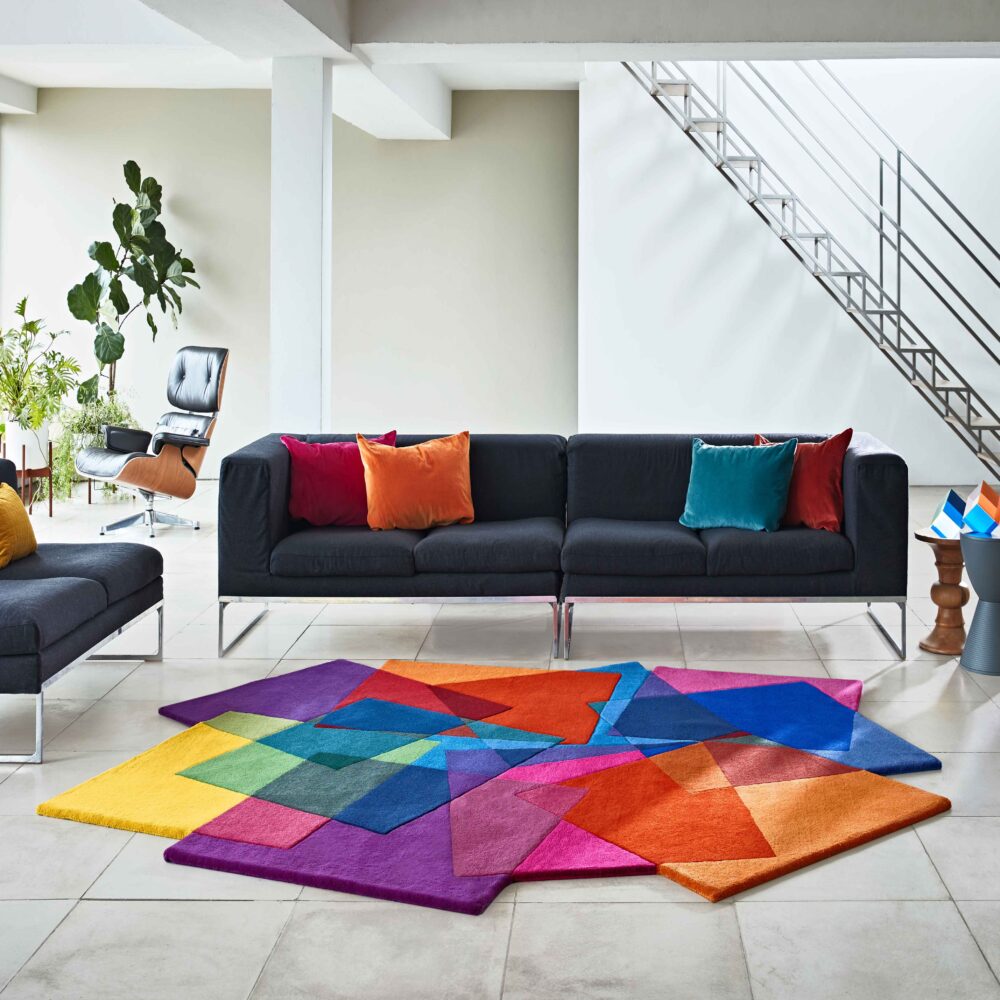
After Matisse Rug by Sonya Winner
The Sonia and Sonya Rug and Runner
The Sonia and Sonya rug and runner merges the realms of colourful abstraction and practical design, resulting in exquisite masterpiece underfoot, transforming everyday floors into galleries full of creativity. Inspired after Sonia Delaunay, and her iconic colour practice, which pioneered the way we use colour in art.
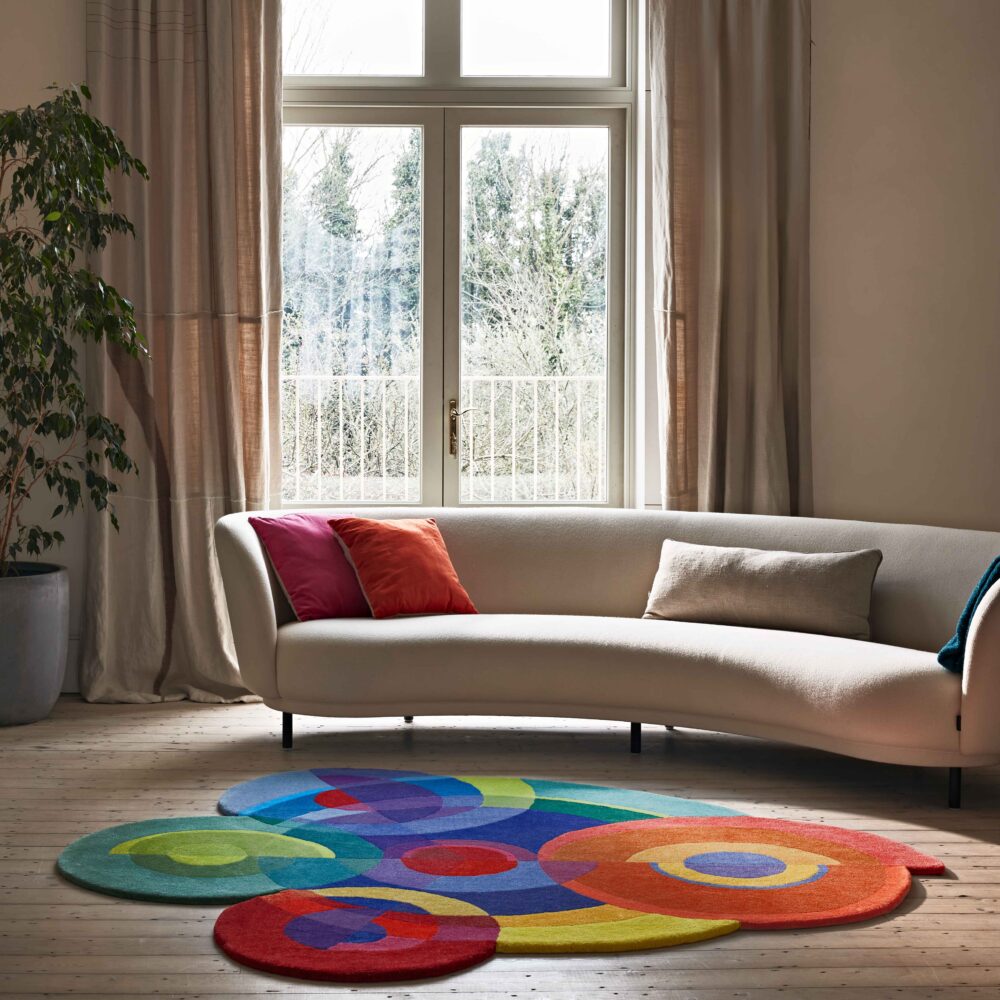
Sonia and Sonya Rug by Sonya Winner
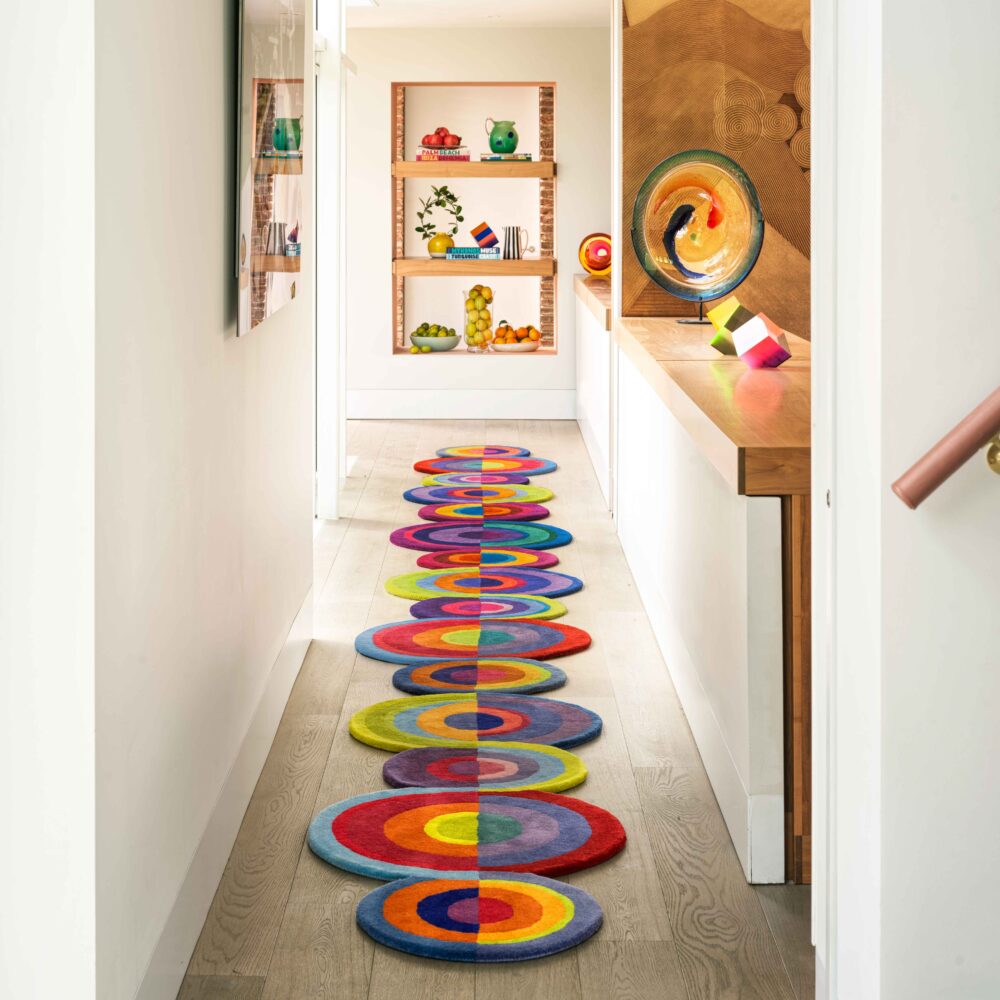
The Sonia and Sonya Runner by Sonya Winner
The Kandinsky Collection
The Kandinsky Collection, including the Kandinsky 1, 2 and 3, is a limited edition series of 3 colourful art rugs featuring painterly circular motifs in hand-dyed 100% New Zealand wool. These motifs pay homage to Wassily Kandinsky’s vibrant palette and style.
Sonya’s love for art has always inspired her design process. She aims to capture Kandinsky’s legacy while infusing contemporary design into the rugs. The goal is to transform conventional floor space into functional art underfoot.
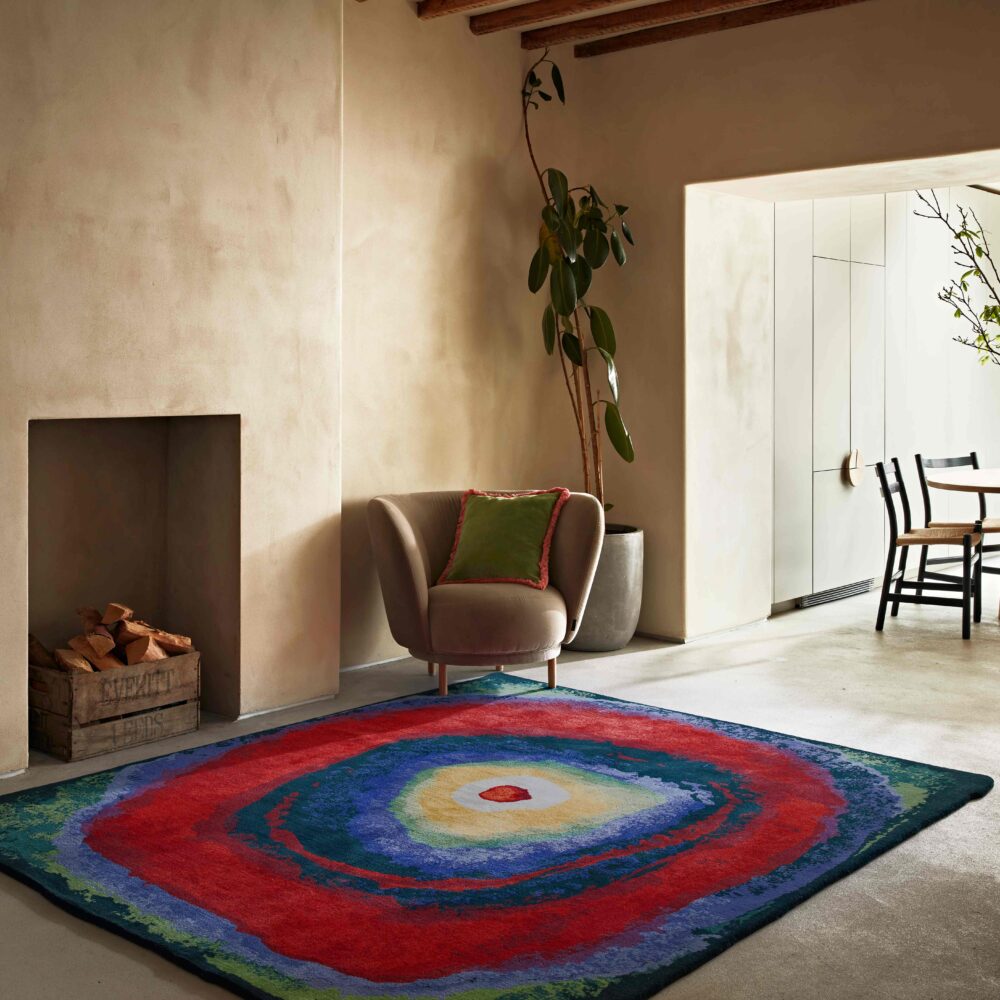
Kandinsky 1 Rug by Sonya Winner

